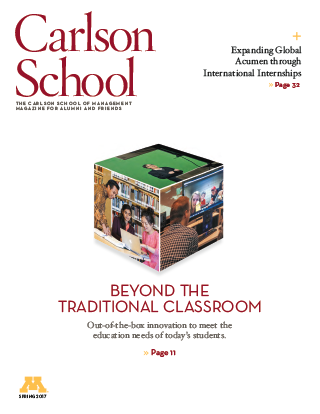
There Can Be Value in Lecture
Thursday, June 22, 2017
“I really appreciate when a professor combines a lecture and discussion in one,” says first-year undergraduate student Ifeoluwa Ekunsanmi. “These formats really help. When a teacher brings in a thought-provoking question, topic, or real-world example and allows the class to give opinions and feedback, it helps us see the topic from multiple perspectives and strategies.”
Although she enjoys the traditional lecture format, Ekunsanmi believes student interaction and participation is important. “One of my professors gives us scenarios based on situations that create complex ethical questions and decisions,” she says. “He pulls up a poll and we vote on how we would respond to the topic. After the polls are in, we discuss why we took such a stance.” Ekunsanmi explains that this format allows students who do not enjoy talking in class a way to participate. “This builds the culture of the Carlson School in a unique way. It gives each student a voice and helps classmates understand different viewpoints and why individuals think the way they do,” she says.
Ekunsanmi finds that integrating multiple teaching methods—polls, discussions, role playing, game simulations, and traditional lectures— engages all learning types and fosters new ways of thinking. “Carlson School students would receive an edge from this multi-format teaching style.”
If there was one method that she has found most valuable so far in her studies, it would have to be the case study. “It allows us to feel like we are consultants, something that cannot be done in an hour lecture,” she says. “We are able to research and learn about the real world and how it operates. We are able to see the types of issues and dilemmas companies face, and we may possibly face one day.”
